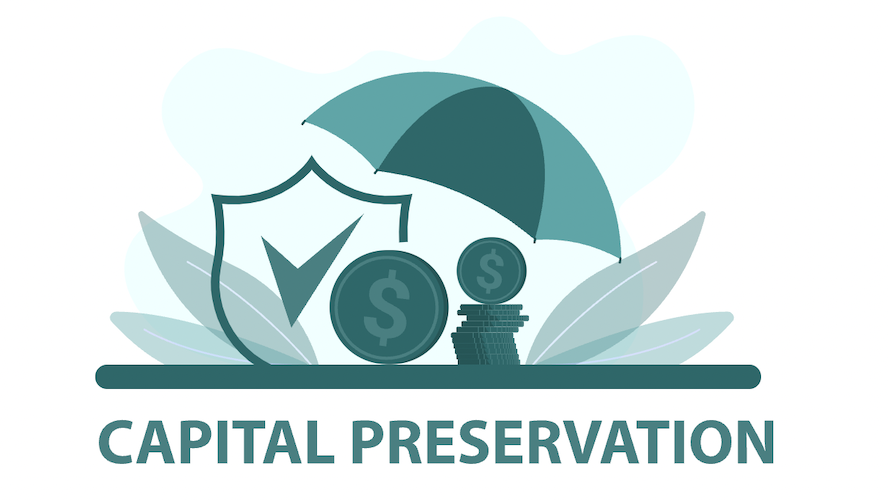Investing in the financial markets causes many to be hesitant because it comes with inherent risks. Market volatility, economic downturns, and unforeseen events can cause significant losses to an unguided investment portfolio. If you’d like to find out what your investment risk comfort level is, click the button below:
As a result, downside protection becomes crucial. Downside protection is a strategy that aims to minimize the potential losses during market declines and economic hardships. Thus it allows investors to safeguard their capital and maintain long-term financial stability. Below, we explore the concept of downside protection, its importance, and some popular strategies used to implement it.
Understanding Downside Protection
In essence, downside protection refers to the measures taken to shield portfolios from significant declines in asset values. The goal is not necessarily to avoid all losses but to mitigate the impact of negative market movements. By implementing some of the strategies involved, we’re often able to limit the potential damage to our client’s capital. In short, the goal is to help them avoid losing a substantial portion of their hard-earned money.
Importance of Downside Protection
- Preserving Capital: One of the primary reasons for implementing downside protection is to preserve capital. By reducing the risk of significant losses, investors can ensure that their savings and investments stay on track to meet their retirement planning goals.
- Emotional Well-being: Market downturns are emotionally draining times for many investors. Downside protection strategies provide peace of mind and alleviate the stress associated with witnessing the value of their investments plummet. This stress far too many investors have become uncomfortably acquainted with in times of market downturns.
- Long-Term Goals: Downside protection aligns with a long-term investment approach. By avoiding severe losses, investors maintain their financial objectives and stay on track with their retirement plans.
The above items demonstrate why, while downside protection is valuable on its own, it is especially powerful when implemented as part of a carefully designed financial plan.
Implementation of Downside Protection Strategies
How do a plan and downside protection in investing cooperate so well?
The Big Picture
To start, you don’t want to make an uninformed decision to simply apportion part of a portfolio into a downside-protected option. Rather each such decision should be taken as part of the greater whole. The greater whole involves your:
-
- investments as a sum of parts
- investments’ individual risk exposure
- current risk tolerance
- current financial needs
- future retirement goals.
Yes, you need to know your personal situation and full financial position as the first step to a plan that involves properly-informed decision. From there you can determine the best way to implement strategies for the preservation of your capital. This leads into the next consideration of implementing downside protection strategies in your investments.
Risk Exposure is an Average of Multiple Parts
Ensuring your investment portfolio is in line with the appropriate risk level for your situation isn’t necessarily about making sure that each one of your investments falls within that range of risk exposure. This is because your overall risk exposure is the average across the various investments and assets you possess.
For example, let’s take an investor with a moderate risk tolerance. He doesn’t need each and every segment of his investment portfolio to be allocated towards strategies that carry that same level of risk. Rather, this investor can have a portion of their portfolio in a more aggressive strategy, while a similar portion is allocated into an option with a high level of capital preservation, such as an insurance-enhanced account.
Planning for Unfavorable Times is a Favorable Venture
In the world of investing, protecting your capital during uncertain times is essential for long-term success. Downside protection strategies offer a way to mitigate risk and safeguard your financial future. Remember, investing always carries some level of risk. Nevertheless, by having a well-designed retirement plan that employs these protective measures, you can navigate turbulent market conditions with greater confidence and resilience. As with any investment decision, it’s essential to consider your risk tolerance. A great way to do that is consulting with a fiduciary financial advisor to tailor downside protection strategies to your specific needs and goals.
If you’d like to get started and find out how much risk your current portfolio is exposed to and how much it should be exposed to, click below to schedule a time to speak to one of retirement plan designers.


